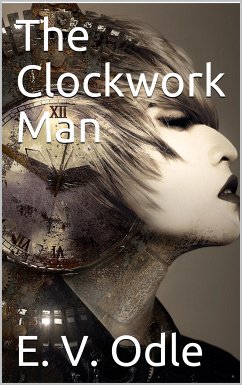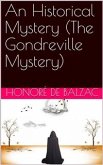Several thousand years from now, advanced humanoids known as the Makers will implant clockwork devices into our heads. At the cost of a certain amount of agency, these devices will permit us to move unhindered through time and space, and to live complacent, well-regulated lives. However, when one of these devices goes awry, a “clockwork man” appears accidentally in the 1920s, at a cricket match in a small English village. Comical yet mind-blowing hijinks ensue.
The novel opens with the farcical setup of the Clockwork Man's abrupt appearance at an early-twentieth-century afternoon cricket match in the countryside, which he ultimately joins and wrecks. The novel soon changes tone, however, and views the threat and promise of the Clockwork Man from several perspectives, including that of a middle-aged doctor who has grown settled in his opinions and middling life and shame at his own lack of originality, and a young man who strains against convention and the predicament of his youth.
Along the way, the story challenges modern assumptions about efficiency, the tyranny of fast-paced life (and small-town opinion), and the value of free will.
The novel opens with the farcical setup of the Clockwork Man's abrupt appearance at an early-twentieth-century afternoon cricket match in the countryside, which he ultimately joins and wrecks. The novel soon changes tone, however, and views the threat and promise of the Clockwork Man from several perspectives, including that of a middle-aged doctor who has grown settled in his opinions and middling life and shame at his own lack of originality, and a young man who strains against convention and the predicament of his youth.
Along the way, the story challenges modern assumptions about efficiency, the tyranny of fast-paced life (and small-town opinion), and the value of free will.
"An excellent example of the promise of the Radium Age series, giving deserved attention to a hilarious and prescient work of science fiction that has almost been forgotten."
Shelf Awareness
Fluidity versus fixedness as markers of peace versus conflict is a strikingly resonant argument to find in a novel that s just under a century old, and it more than justifies time spent in the company of The Clockwork Man.
The Los Angeles Review of Books
About the Radium Age Series:
Joshua Glenn s admirable Radium Age series [is] devoted to early- 20th-century science fiction and fantasy.
The Washington Post
Long live the Radium Age.
The Los Angeles Times
It s an attractive crusade. [ ] Glenn s project is well suited to providing an organizing principle for an SF reprint line, to the point where I m a little surprised that I can t think of other similarly high-profile examples of reprint-as-critical-advocacy.
The Los Angeles Review of Books
Neglected classics of early 20th-century sci-fi in spiffily designed paperback editions.
The Financial Times
New editions of a host of under-discussed classics of the genre.
Tor.com
Shows that proto-sf was being published much more widely, alongside other kinds of fiction, in a world before it emerged as a genre and became ghettoised.
BSFA Review
A huge effort to help define a new era of science fiction.
Transfer Orbit
An excellent start at showcasing the strange wonders offered by the Radium Age.
Maximum Shelf
Shelf Awareness
Fluidity versus fixedness as markers of peace versus conflict is a strikingly resonant argument to find in a novel that s just under a century old, and it more than justifies time spent in the company of The Clockwork Man.
The Los Angeles Review of Books
About the Radium Age Series:
Joshua Glenn s admirable Radium Age series [is] devoted to early- 20th-century science fiction and fantasy.
The Washington Post
Long live the Radium Age.
The Los Angeles Times
It s an attractive crusade. [ ] Glenn s project is well suited to providing an organizing principle for an SF reprint line, to the point where I m a little surprised that I can t think of other similarly high-profile examples of reprint-as-critical-advocacy.
The Los Angeles Review of Books
Neglected classics of early 20th-century sci-fi in spiffily designed paperback editions.
The Financial Times
New editions of a host of under-discussed classics of the genre.
Tor.com
Shows that proto-sf was being published much more widely, alongside other kinds of fiction, in a world before it emerged as a genre and became ghettoised.
BSFA Review
A huge effort to help define a new era of science fiction.
Transfer Orbit
An excellent start at showcasing the strange wonders offered by the Radium Age.
Maximum Shelf









